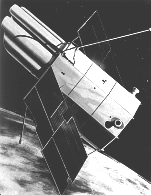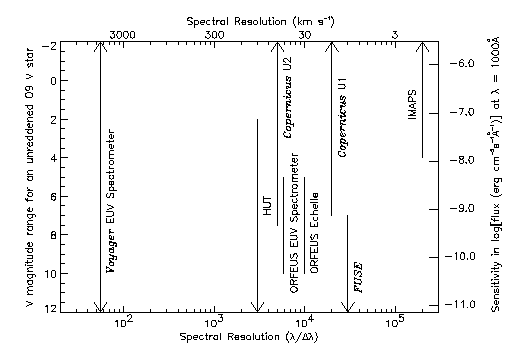|
|||||||||||||||||||
|
|
|||||||||||||||||||
|
|
About Copernicus

- Spacecraft Description
- Copernicus Instrument Description
- Copernicus Instrument Performance
- Guest Observer's Guide
Mission
The third Orbiting Astronomical Observatory was launched by NASA from Cape Canaveral on August 21, 1972 and operated until February 1981. At that time, the spacecraft was the heaviest (2.2 tonnes) unmanned space observatory launched. The satellite, named Copernicus, was designed to seek answers to some of the fundamental questions concerning stars and interstellar matter by obtaining high resolution ultraviolet spectra, especialy in the 900-1200 Å wavelength region. The principal experiment was a 32-inch (0.8m) diameter reflecting telescope and ultraviolet spectrometer system designed, built, and operated by the Princeton University Observatory. Professor Lyman Spitzer, Jr. was the Principal Investigator for this experiment.Copernicus also contained a set of X-ray detectors co-aligned with the ultraviolet telescope. Further information about this set of experiments is available from Goddard's High Energy Astrophysics Science Archive Research Center (HEASARC).
At the end of the mission, Princeton provided the National Space Science
Data Center (NSSDC) with a
compact set of data on 9-track tapes as the final archive of the
Copernicus science mission. The data were formatted in such a
manner that special programs were needed to extract the information, bit
by bit, from the archive. Under a grant from NASA's Astrophysics Data
Program, the Laboratory for
Astronomy and Solar Physics and the IUE
Data Analysis Center have
converted the tape files into FITS
format disk files and created an on-line archive of Copernicus
ultraviolet spectra.
Spectral Data
Unlike data for NASA's modern UV satellite missions, Copernicus data files are neither background-corrected nor converted to a physical flux scale. For this reason we will refer to individual scans as "raw" data files. (Background corrections are available in the files and may be applied).
There is one FITS format file of raw scans for each object observed by
Copernicus. These files are available from this Web site and via
anonymous FTP at archive.stsci.edu in the /pub/copernicus/raw
subdirectory. The FITS files containing the raw spectral scans are
constructed using a Binary table extension and the proposed "variable
length array facility" as described in the NOST FITS Draft Standard.
Each row of the binary table contains the data from one spectral scan.
In addition to the raw data files, coadded contemporaneous scans from the U1 high resolution channel (900-1560 Å) and U2 (900-1650 Å) channel are available. These scans are stored as standard Binary table FITS files using fixed length vector fields. The files are intended primarily for quick-look data analysis.
The Copernicus spectral atlas files are also available. These files use FITS binary table extensions with scalar fields. References to the original published papaers are also given.
Spectral Resolution and Sensitivity
The plot below shows the spectral sensitivity and resolution of the Copernicus U1 and U2 detectors compared to other recent UV detectors (courtesy of Derck Massa, Raytheon STX, Goddard Space Flight Center).
|
|
|




 Follow Us
Follow Us